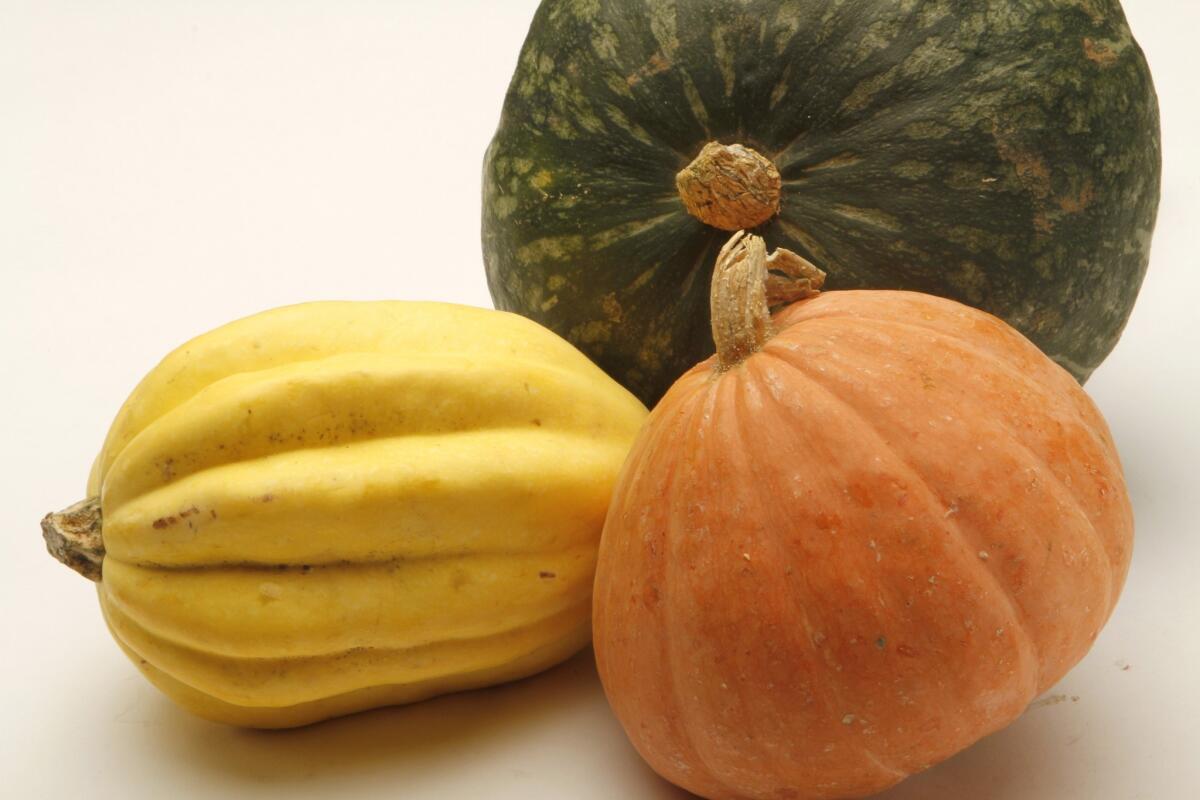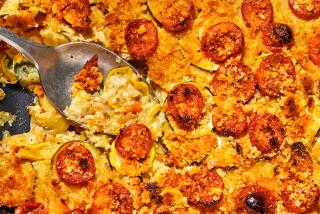California Cook: Many ways to cook squash: Take the journey

In cooking, as in so many other things, every journey starts with a first step. Choose well and you’re halfway to your destination. Choose badly and you may wind up stumbling.
Think about how you cook winter squash, for example. Almost reflexively, when I start to fix it, I turn on the oven and roast away until the squash nearly collapses in on itself. I like the results: The squash turns creamy, and the bit of caramelization deepens the sweet flavor.
But that’s far from the only way to cook a squash, and maybe some other techniques would work as well. To find out, I cut peeled butternut squash into 1-inch cubes and cooked them five ways.
These weren’t finished dishes but just those fateful first steps: boiling, steaming, deep-frying, glazing and, of course, roasting. I purposely prepared each version with as little seasoning as possible to make the elemental differences clearer. This was science, not dinner.
I found that each cooking method yielded a different taste and texture, sometimes dramatically so, and that each has its appropriate use, even if it might take some thinking to figure out what that might be.
It turns out that each of those first steps do lead somewhere; you just need to choose wisely.
Boiling: I simmered the squash cubes in plain water at 205 to 210 degrees; they took about 12 minutes to become tender. The color was pale and the flavor was bland, vaguely sweet and fairly vegetal. The texture was slightly fibrous. Doesn’t sound so good? But when I tasted the cooking water, there was a subtle squash flavor. So, for certain kinds of soups, in which you want the squash to contribute to the flavor but not dominate (say, a winter minestrone), this would be perfect.
Steaming: Cooked over boiling water in a tightly covered pot, this took 12 minutes as well. The color was still pale, though a little darker, and it was definitely sweeter with a deeper squash flavor. Rather than fibrous, the texture was more like grainy. Making a salad with cooked squash? This would definitely be the way to go. The cubes are firm enough to hold together, and the flavor is pronounced enough not to be overwhelmed. A nice vinaigrette, some fresh herbs, Parmigiano-Reggiano and walnuts maybe?
Glazing: One of my favorite techniques with most vegetables is to cook them covered over medium heat with a little water and some fat (I used vegetable oil to not distract from the flavor). When the vegetable is tender, remove the lid and increase the heat to high, evaporating the water and coating the vegetable with the reduced glaze. This took about 13 minutes altogether. The color was a much richer orange, and the sides were lightly and evenly caramelized. The flavor was not quite as deep as roasted, but the squash browned more evenly. Done with butter and, say, shallots and sage or mint, this might be great.
Deep-frying: This was a weird one. I fried the cubes uncoated at 350 to 375 degrees. After 10 minutes, they were tender on the inside but with a slightly chewy surface. The cubes were well-browned but had shriveled slightly, looking a little like deep-fried tofu. The flavor was richer and deeper than, say, steamed, but it was slightly oily, even after draining. It was an intriguing combination of flavor and texture, but I’ll admit that I haven’t yet thought of a way to exploit it. Still, it was good enough I’ll tuck this one away for future pondering.
Roasting: OK, so I hadn’t been completely off my rocker. Roasted at 400 degrees, the squash took about 45 minutes to become tender. And I needed to turn the cubes so they browned evenly. But the flavor was both the sweetest and the most complex, thanks to the caramelization and our old friend the Maillard reaction: the browning that characterizes everything from roast meats to bread crust to pie shells. The texture was utterly creamy, perfect for puréeing when serving the squash on its own or in a more complicated dish (such as stuffing pasta).
More to Read
Eat your way across L.A.
Get our weekly Tasting Notes newsletter for reviews, news and more.
You may occasionally receive promotional content from the Los Angeles Times.







